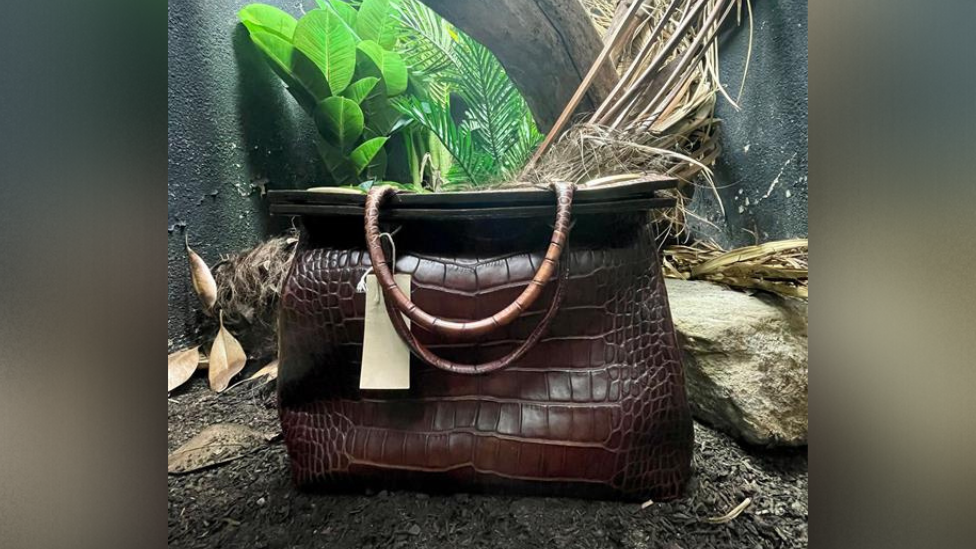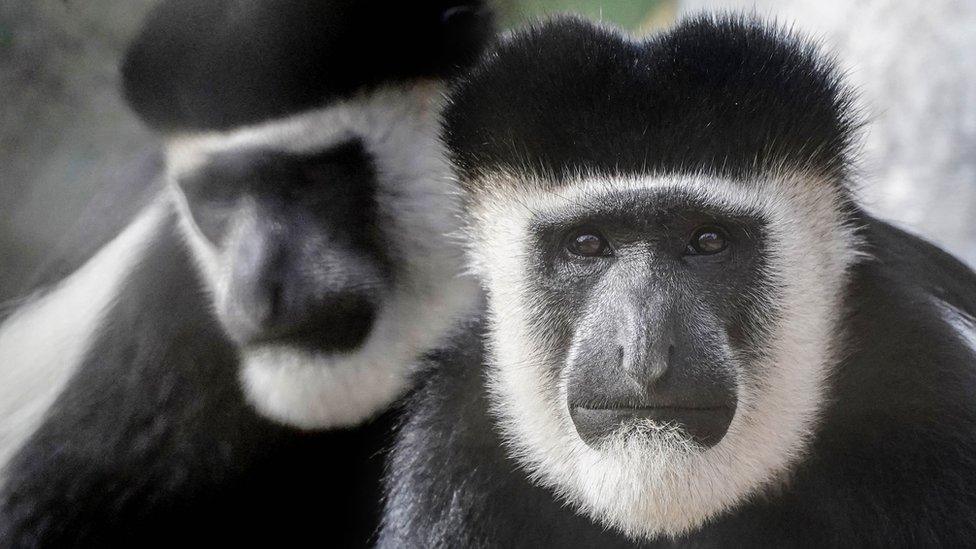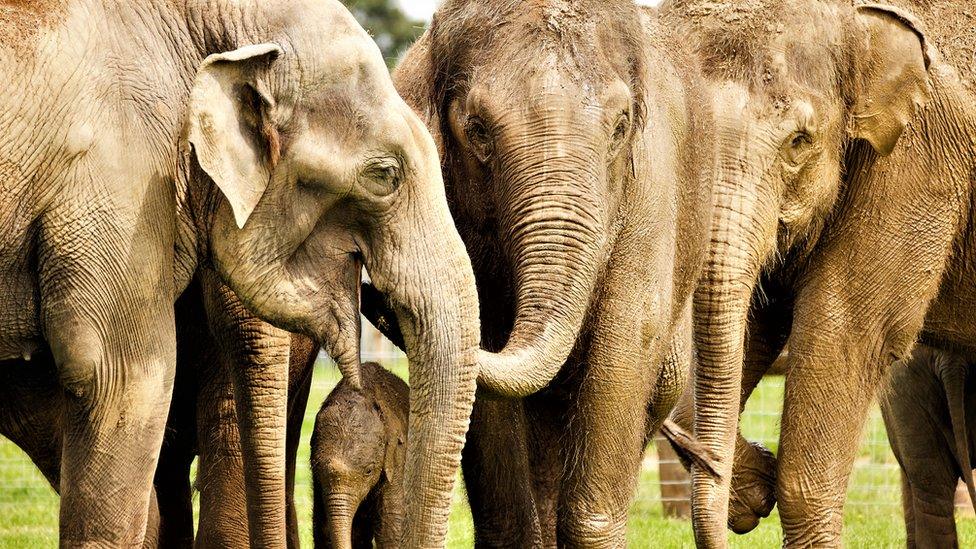London Zoo's crocodile skin handbag display goes viral
- Published

The handbag was seized by UK border officials and handed to the zoo
Monkeys, penguins, and lions are just some of the animals you would normally expect to see on a visit to ZSL London Zoo.
But head to its reptile house in search of the endangered Siamese crocodile and you will find something that looks much too inanimate to be drawing a crowd of zoo visitors to watch it "in action". It's a handbag that has been made from the skin of one such crocodile.
The bag was seized by UK border officials at a London airport back in 2018 and handed to the zoo in order to highlight the impact that the illegal wildlife trade is having across the globe.
There are no live Siamese crocodiles at the zoo - and that is fairly understandable given that there are only between 500 and 1,000 are thought to be left worldwide due to habitat loss and hunting.
Although the zoo's display has been in place for the past few years, a recent tweet from a visitor showing a photo of the bag has gone viral on Twitter, external, sparking a renewed interest in the illegal trade.
Allow X content?
This article contains content provided by X. We ask for your permission before anything is loaded, as they may be using cookies and other technologies. You may want to read X’s cookie policy, external and privacy policy, external before accepting. To view this content choose ‘accept and continue’.
Reptile and amphibian curator Dr Ben Tapley said he was pleased that awareness was spreading.
"It's great to have all these fantastic animals here but the handbag has caught people's eye," Dr Tapley says.
"We wanted to educate our visitors about it and create a talking point. Anything which shines a spotlight on the illegal trade is great."
In their normal habitat, Siamese crocodiles would be found swimming in slow-moving rivers across south-east Asia and Indonesia.
But the population was "hit really hard" by the trade in the mid to late 20th century, with many being hunted for their skin for commercial use, Dr Tapley says.
"Their populations are fragmented and how functional those populations are is questionable," he adds.
Dr Tapley says that London Zoo works with governments and communities across the world to protect wildlife, support law enforcement that targets trafficking networks, and reduce demand for threatened species.
There are a number of critically endangered species at London Zoo, many of which are species targeted by illegal wildlife traders.
Since 2000, the zoo has provided a home for more than 3,000 animals confiscated by the UK Border Force as part of its work at airports and ports.
These exotic inhabitants at the 196-year-old zoo - in Regent's Park - include Egyptian tortoises, red rain frogs, green tree pythons and hundreds of corals.
Related topics
- Published29 July 2022

- Published21 May 2022
